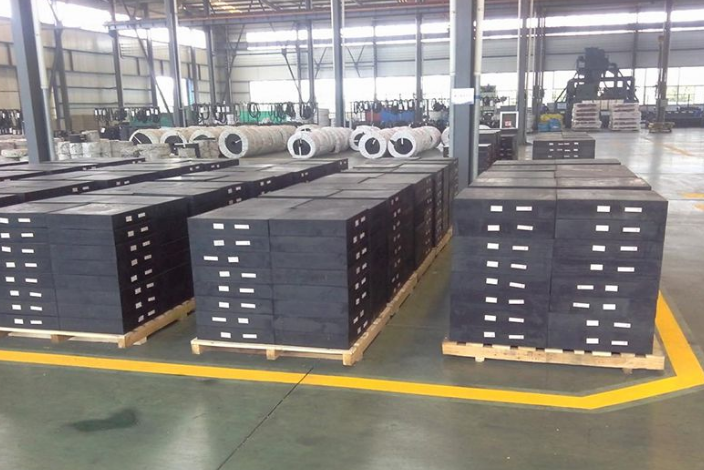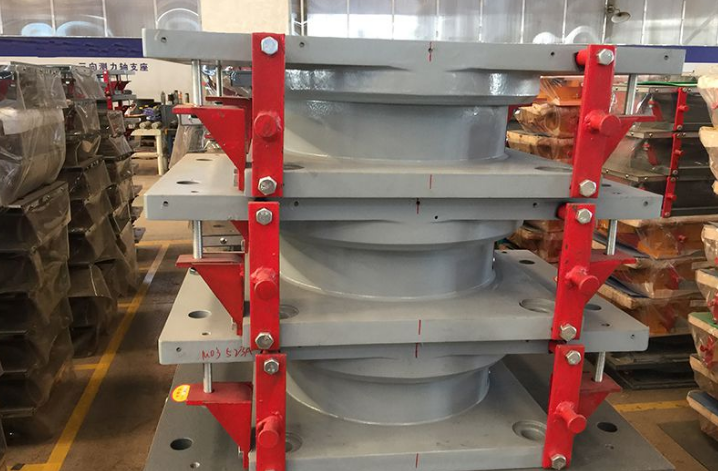In the realm of structural engineering, the selection of bearing systems holds paramount importance in ensuring the stability, safety, and longevity of various infrastructure projects. Among the many types of bearings available, elastomeric bearings and pot bearings are two commonly employed options. Each type has its distinct characteristics and advantages, catering to different project requirements. In this article, we delve into the intricacies of elastomeric bearings and pot bearings, highlighting their differences, applications, and benefits.
Elastomeric Bearings: Flexibility and Resilience
Elastomeric bearings, as the name suggests, are made from elastomers – a class of polymers known for their elastic properties. These bearings are designed to accommodate various structural loads while providing flexibility and damping capabilities. The primary components of elastomeric bearings include layers of elastomer reinforced with steel plates. The elastomer allows controlled movement through its deformation under load, thus providing seismic isolation and vibration mitigation.
Key Features of Elastomeric Bearings:
1. Load Distribution: Elastomeric bearings distribute vertical loads through the elastomeric material, which also enables horizontal movement due to its flexibility.
2. Vibration Isolation: These bearings effectively isolate vibrations and shocks, protecting the structure from potential damage during seismic events or heavy dynamic loads.
3. Cost-Effectiveness: Elastomeric bearings are relatively cost-effective compared to other advanced bearing systems, making them suitable for a wide range of projects.
4. Easy Installation: The installation process is simpler, as elastomeric bearings do not require complex maintenance or specialized equipment.
Applications of Elastomeric Bearings:
Elastomeric bearings find applications in various structures, including:
- Bridges: Elastomeric bearings are often used in bridge construction to absorb and dissipate forces caused by traffic loads and thermal expansion.
- Buildings: These bearings provide flexibility to buildings, allowing them to sway during earthquakes without sustaining significant damage.
- Industrial Structures: Elastomeric bearings are utilized in industrial settings to minimize vibrations caused by heavy machinery and equipment.

bridge elastomeric bearings
Pot Bearings: Load-Bearing Precision
Pot bearings, on the other hand, are a type of sliding bearing that consists of a concave pot and a movable cylindrical component. The pot is filled with a specialized lubricant to facilitate smooth movement. This type of bearing is known for its load-carrying capacity and durability.
Key Features of Pot Bearings:
1. High Load Capacity: Pot bearings excel in carrying heavy loads, making them suitable for large-scale infrastructure projects.
2. Precise Movement: The design of pot bearings allows controlled and precise movement, essential for structures with complex load distributions.
3. Longevity: The use of high-quality materials and lubricants contributes to the durability and extended service life of pot bearings.
4. Resistance to Environmental Factors: Pot bearings are designed to withstand environmental factors such as temperature variations and corrosion.
Applications of Pot Bearings:
Pot bearings are commonly found in the following applications:
- Highway Bridges: Pot bearings support the expansive spans of highway bridges, providing stability and controlled movement.
- Railway Structures: These bearings accommodate the dynamic loads of railway bridges and allow smooth expansion and contraction.
- Multi-Story Buildings: Pot bearings are employed in multi-story buildings where load distribution and precise movement are crucial.

Rubber Pot Bearing for Railway
Choosing Between Elastomeric and Pot Bearings: Considerations
The choice between elastomeric and pot bearings depends on various factors, including project specifications, load requirements, budget constraints, and environmental conditions. Consulting with structural engineers and bearing specialists is essential to determine the most suitable option for a particular project.
Conclusion
The difference between elastomeric and pot bearings lies in their design, load-bearing capacity, and applications. Elastomeric bearings provide flexibility and vibration isolation, whereas pot bearings excel in carrying heavy loads with precision. Both types play vital roles in ensuring the safety and longevity of diverse structures across the engineering landscape.
Yongxi Industrial Co., Ltd., the rubber Technology group company, is a professional bridge-bearing manufacturer.
Yongxi Industrial Co, Ltd. is mainly responsible for the production of seismic isolation used on bridges and buildings, and all kinds of bridge bearings include Railway Simply Supported Beam Bridge Bearings, Highway Bridge Bearings, Laminated bridge bearings, etc.
If you want to read more information about our product, just click on the image below to get a more details:






Comments
All Comments (0)